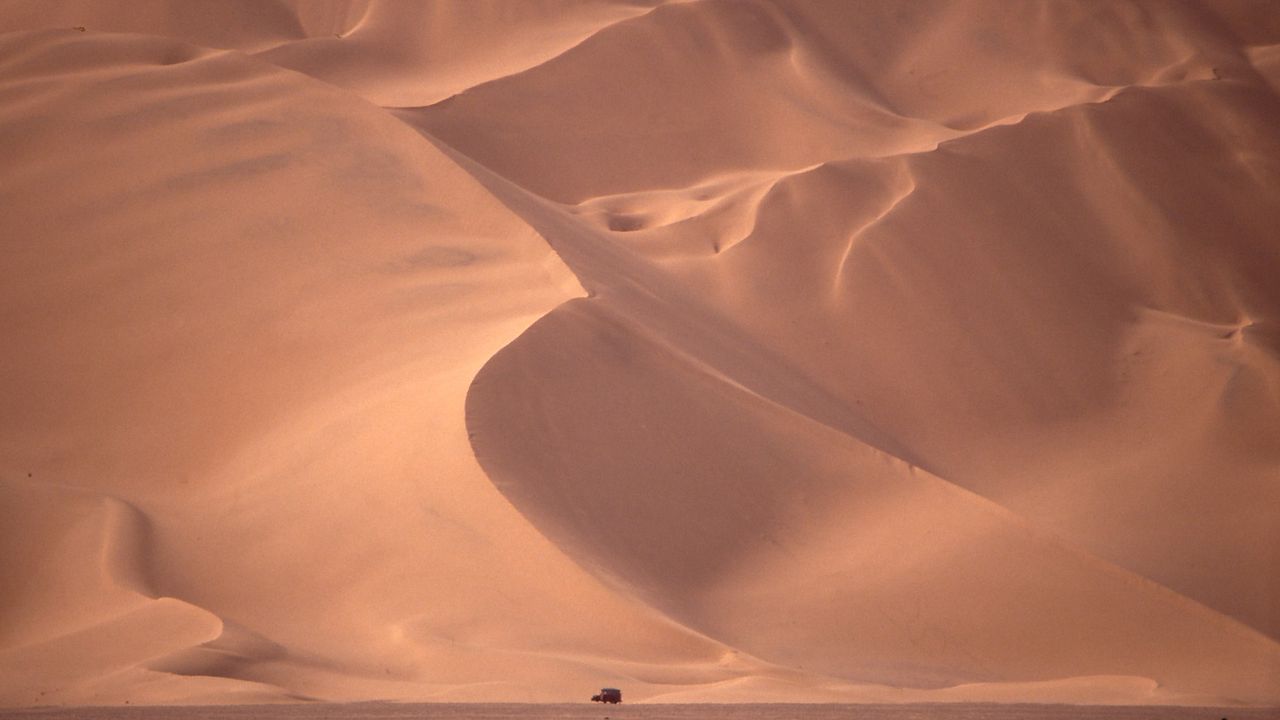
The Sahara Desert is a colossal expanse of land that stretches from the Red Sea until Atlantic Ocean, occupying almost nine and a half million square kilometers. Covers a total of ten countries among those who are Egypt, Libya, Chad, Algeria, Morocco, Tunisia and Mauritania.
With that extension, it shouldn't surprise you that it's the largest hot desert in the world and that it encompasses different ecoregions, each one of which has its peculiarities. Thus, they have nothing to do with steppe and wooded savanna of southern Sahara with the xerophilous mount of the Tibesti massif. And likewise neither of the two previous ones with the Tanezrouft, one of the most extreme places on Earth. Therefore, if you want to know a little more about the colossal Sahara desert, we invite you to join us on our trip.
What to see and do in the Sahara desert
There are numerous areas of the Sahara desert that we are not even going to talk to you about. The reason is very simple: they are places so inhospitable that only the authentic expert professionals who know very well the secrets of those lands travel to them. However, there are other sites that we can visit in organized excursions and that they will dazzle us with their beauty. We are going to know some of them.
The Ennedi plateau
This incredible place is located in the northeast of Chad and it is considered one of the most remote on our planet. Surrounded by sand on all sides, it stands out for its impressive gorges and plains.
Heritage, nature has formed in Ennedi colossal arches and pillars. Among the first stands out that of aloba, which reaches 120 meters in height and 77 in width. And equally curious are the Five Arches, which, as its name indicates, forms a sort of triumphal arch with five openings, and the Elephant Arch, which resembles the trunk of a pachyderm and even an eye in its upper part.
As if all this were not enough, in this inhospitable place they have found paintings that show that it was inhabited during the Holocene (fourth millennium BC). Especially prominent are those in the area of Niola doa, representing women up to two meters tall.
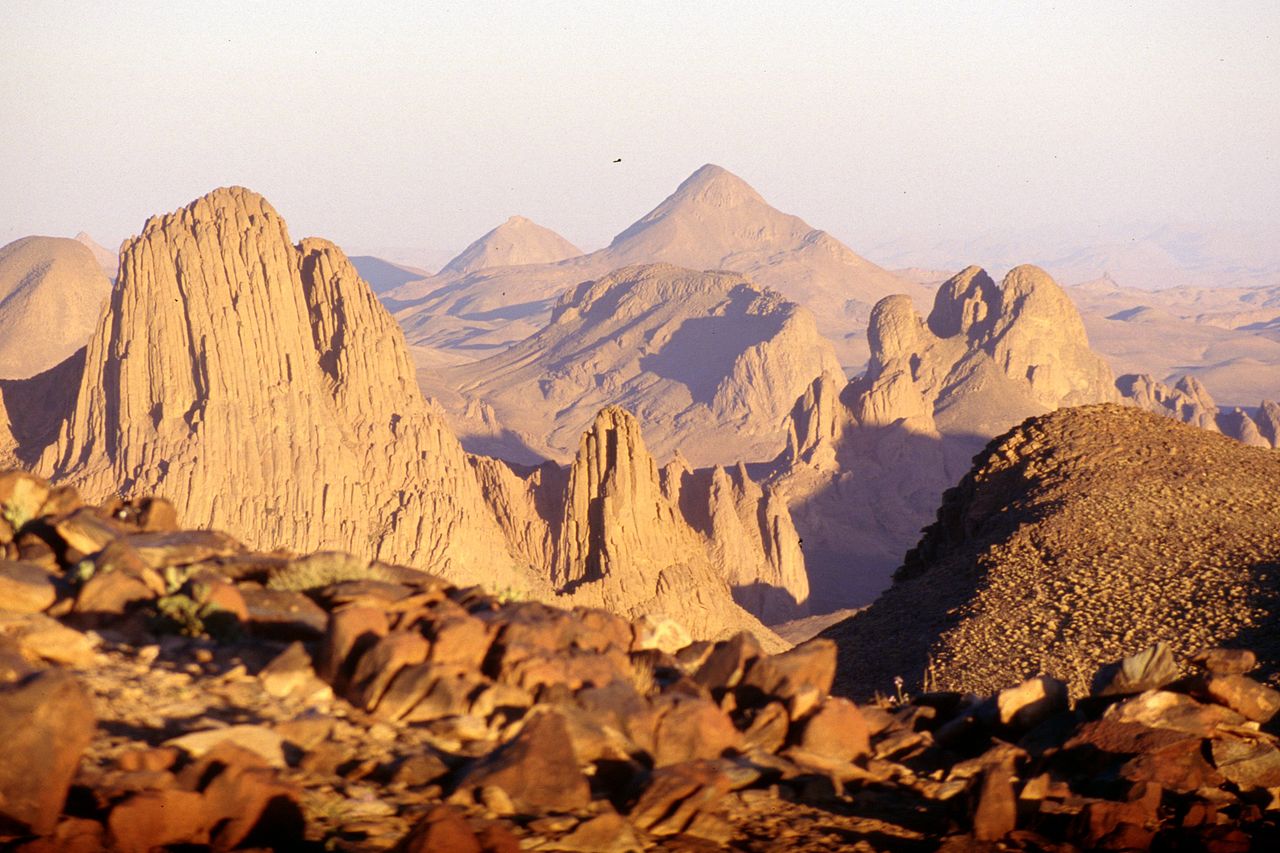
Massif of Ahaggar
The Ahaggar massif
We now move to the south of Algeria to visit another of the most impressive places in the Sahara. It is the mountainous massif of Ahaggar or home. Despite its heights, the climate in this area is less extreme than in other places in the desert, which is why it is visited by many tourists.
Over time, erosion has given these mountains capricious shapes that give the landscape a mysterious appearance. If to all this we add that it is the land of the imuhagh, one of the towns Tuareg that inhabit the Sahara, we will finish wrapping this place in magic.
The most important city in this area, from which tourist excursions depart is Tamanrasset. If you want to know a town built around an authentic oasis, this is your destination. In addition, it has a small museum of prehistory and another of geology. But it is more famous because French was established in it Charles de Foucauld, explorer and mystic of the call "Spirituality of the desert".
The Mzab valley
We did not leave Algeria to meet another of the wonders of the Sahara: the Mzab valley, declared Heritage. It is a rocky plateau crossed by the valley that houses the river of the same name.
It is inhabited by girls, a Berber ethnic group that was distributed among small walled towns, each of which was built on one of the hills in the area. Among these locations are Isguen Me, whose mosque dates from the twelfth century; melika, Bounoura o The Ateuf. But the most important is Ghardaïa, a name that is also given to the whole complex, with its narrow streets and its small adobe houses.
Nouadhibou, a ship graveyard in the Sahara desert
Although it is not particularly attractive, we bring the town of Nouadhibou to these lines because it is home to a whole ship cemetery, something surprising in the desert. However, it is located on the Atlantic Ocean coast of Mauritania, where the Sahara meets the sea.
Plunged into a major economic crisis, the country's government allowed ships from all over the world to be abandoned on its shores. The result is that there you can see about three hundred that have been degrading over time and creating a really ghostly scenery.
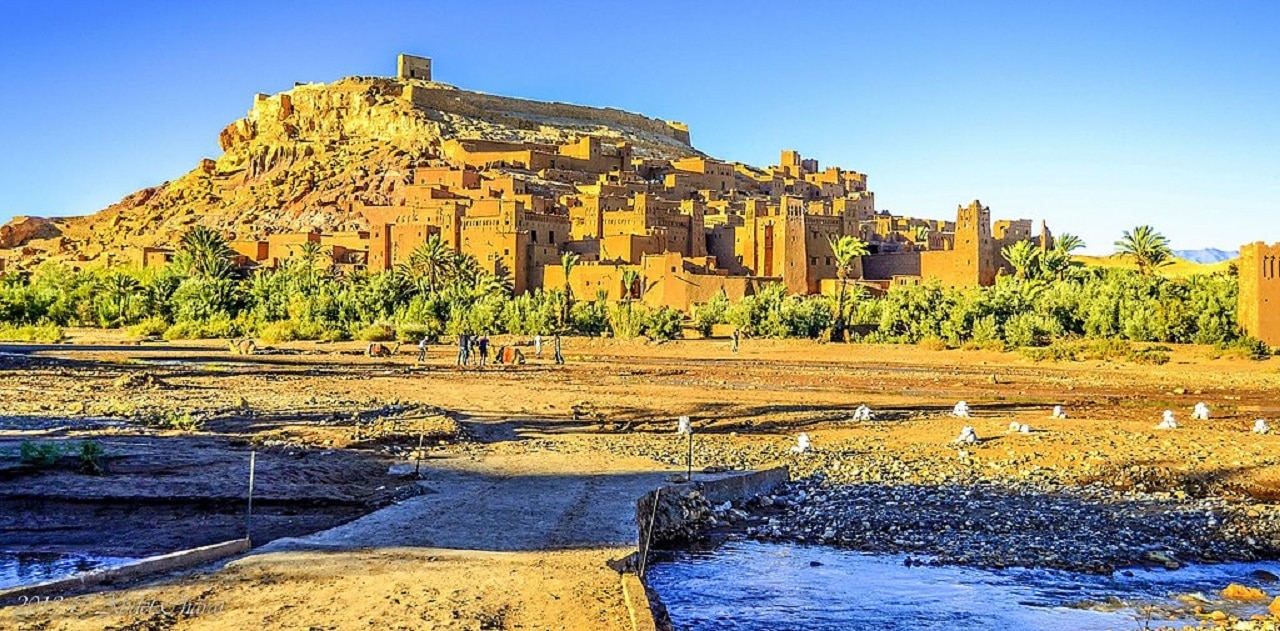
Ait Ben Haddou
Ait Ben Haddou
This ksar o fortified city Moroccan has become popular all over the world for the wide range of colors that the sun reflects off its adobe houses. You will find it a few hours' drive from Marrakech on an old route made by camel caravans.
Such is the beauty of Ait Ben Haddou that it has been declared Heritage and has served as the setting for numerous films like 'Lawrence of Arabia', 'The Jewel of the Nile' or 'Alexander the Great' and from television series like 'Game of Thrones'.
Erg Chebbi, a sea of dunes
Also located in Morocco, this sea of dunes occupies about one hundred and ten square kilometers and it is also really impressive. One of the most popular attractions in the area is to ride a camel and sleep in authentic jaimas.
These routes depart from the town of Merzouga, which is therefore perfectly adapted to tourism with several hotels. In it you can also see the Merzouga Rally, which is part of the Dakar Series circuit. And it even has a singular legend regarding its dunes. It says that they were born of divine fury when the inhabitants of Merzouga refused to help a mother and her children. The divinity then awakened a terrible sandstorm that created them. The inhabitants of the area still today believe they hear screams coming from those dunes.
Ouarzazate
Without leaving Morocco, another visit to the very entrance of the Sahara is Ouarzazate or Uarzazat, as it is known as «The Gate of the Desert». It is located at the foot of the atlas mountains and next to the so-called South Oasis.
Precisely Atlas are called the film studies What is there in the city. If we previously talked to you about Ait Ben Haddou as the setting for different films, this was largely due to the existence of these sets, which occupy about twenty hectares and have made Urzazat the film capital of Morocco.
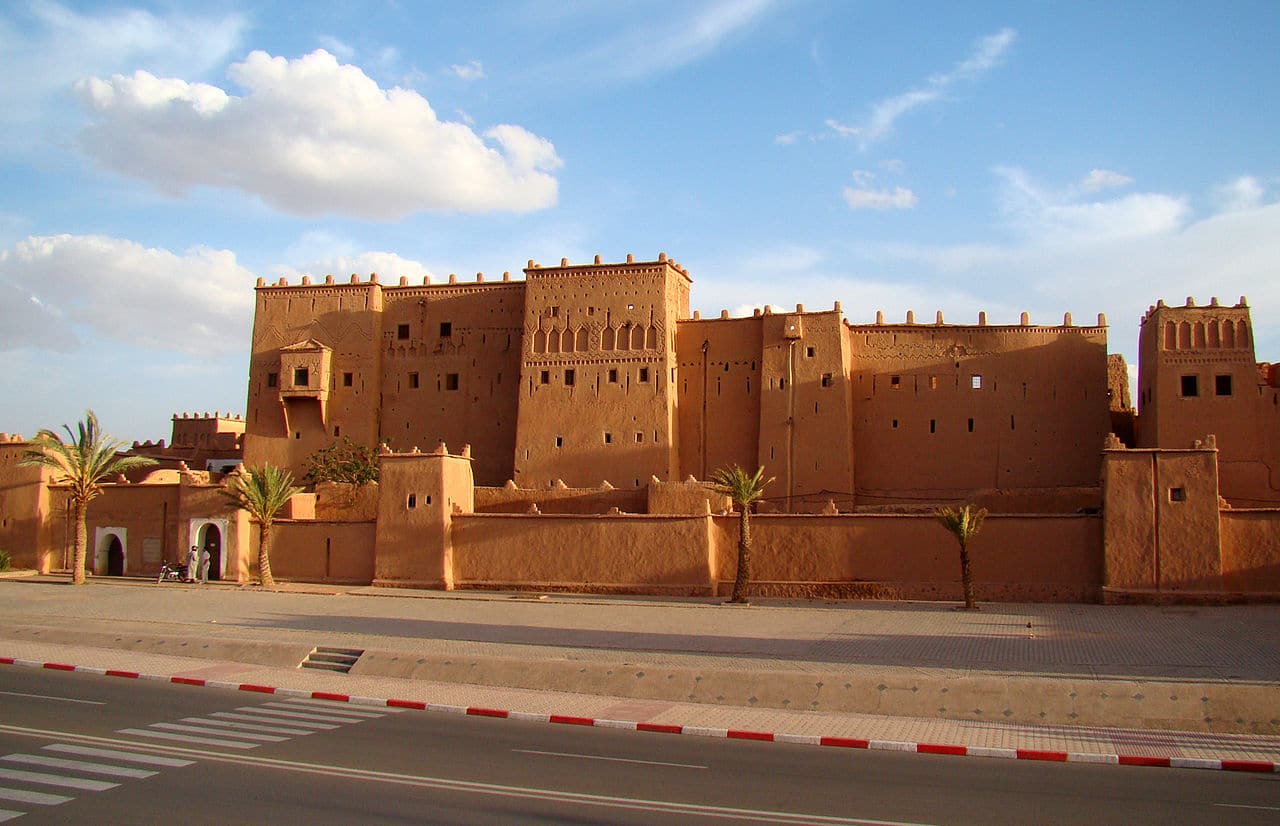
Kashba of Taourirt in Ouarzazate
But the city has much more to offer you. For starters, its stunning and perfectly preserved citadel of Taourit. She kashbah or fortress of Berber origin that is in the heart of the town and that, in its time, was the residence of the Pasha of Marrakech. It has often been compared to a gigantic sand castle on the beach. And it is an accurate image because its adobe walls and its great towers in the middle of the immensity of the desert give it that aspect.
The Fezzan, the Libyan part of the Sahara desert
The Fezzan area is probably the most spectacular part of the Libyan Sahara. It is a wide space where the desert is combined with mountains and dry valleys, but, above all, where every certain distance an oasis appears that allows life to the peoples created around it.
This area of the Sahara offers you landscapes as impressive as the volcanic crater of Waw-an-Namus, of whose dimensions the fact that it houses an oasis and three artificial lakes will give you an idea. Also the sea of sand of Murzuq, with its imposing dunes; the peculiar ones Akakus Mountains, with their whimsical shapes, or the palm trees and reeds located on the edge of the salty lagoon of Umm-al-Maa, vestige of the ancient megafezzan lake which was as big as England.
On the other hand, the most important town in this area is Sabha, an oasis city of one hundred thousand inhabitants where Muhamad el Gaddafi, former leader of Libya, grew up. But there are other smaller ones like Ghat, Murzuq o gadhamis.
Mount Uweinat, mysterious hieroglyphs
The Uweinat massif is distributed between Egypt, Libya itself and Sudan. It is surrounded by the Sahara desert, but it also has fertile oases such as those of bahariya o farafra. The area is a powerful magnet for hikers who like adventure.
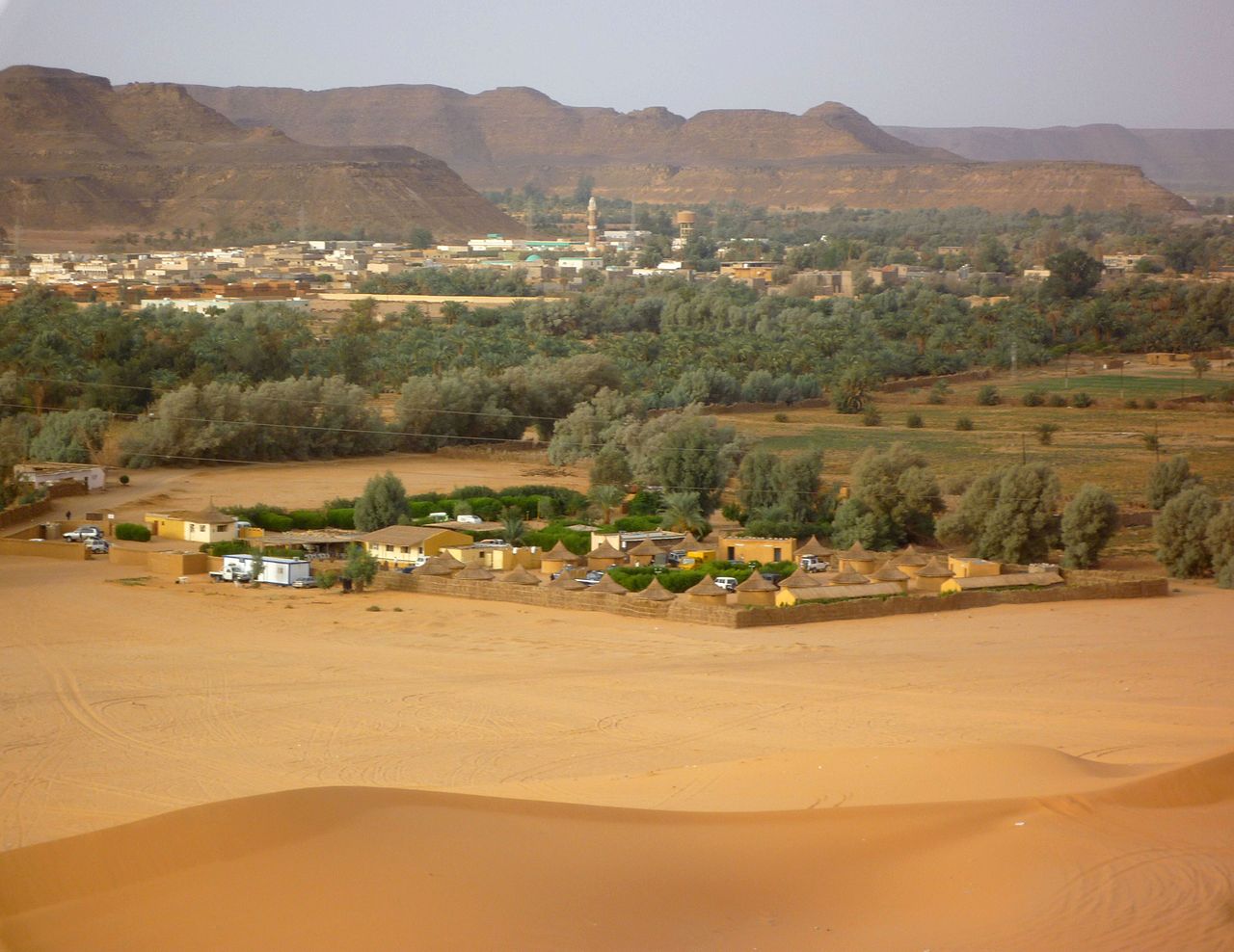
Camp at El Fezzan
But, above all, it stands out because in the plain of Gilf kebir carvings were found on the rocks and hieroglyphics very old that represent all kinds of animals. They were found by the Egyptian explorer Ahmed Hassanein Pasha in 1923. This one traveled forty kilometers of that zone, but could not arrive until the end so it is possible that there are more.
Finally, in this area it is in impressive Kebira crater, which was the result of the impact of a meteorite that occurred about fifty million years ago and covers a colossal area of four thousand five hundred square kilometers.
When is it better to go to the Sahara desert
As you might suppose, the Sahara has one of the harshest climates in the world. It is true that such an enormous area of land has, by force, to present different climates. However, almost all of the absence of rain and extreme heat, which can easily reach fifty-five degrees Celsius, is common to all of it.
In fact, in spring and summer, excursions into the desert only take place at sunset. Therefore, the best times to travel to the Sahara are autumn and winter, more specifically the months that go from November to February.
And, for excursions, you should always choose the organized. You cannot enter this colossus of sand without a qualified guide because your life would be in serious danger.
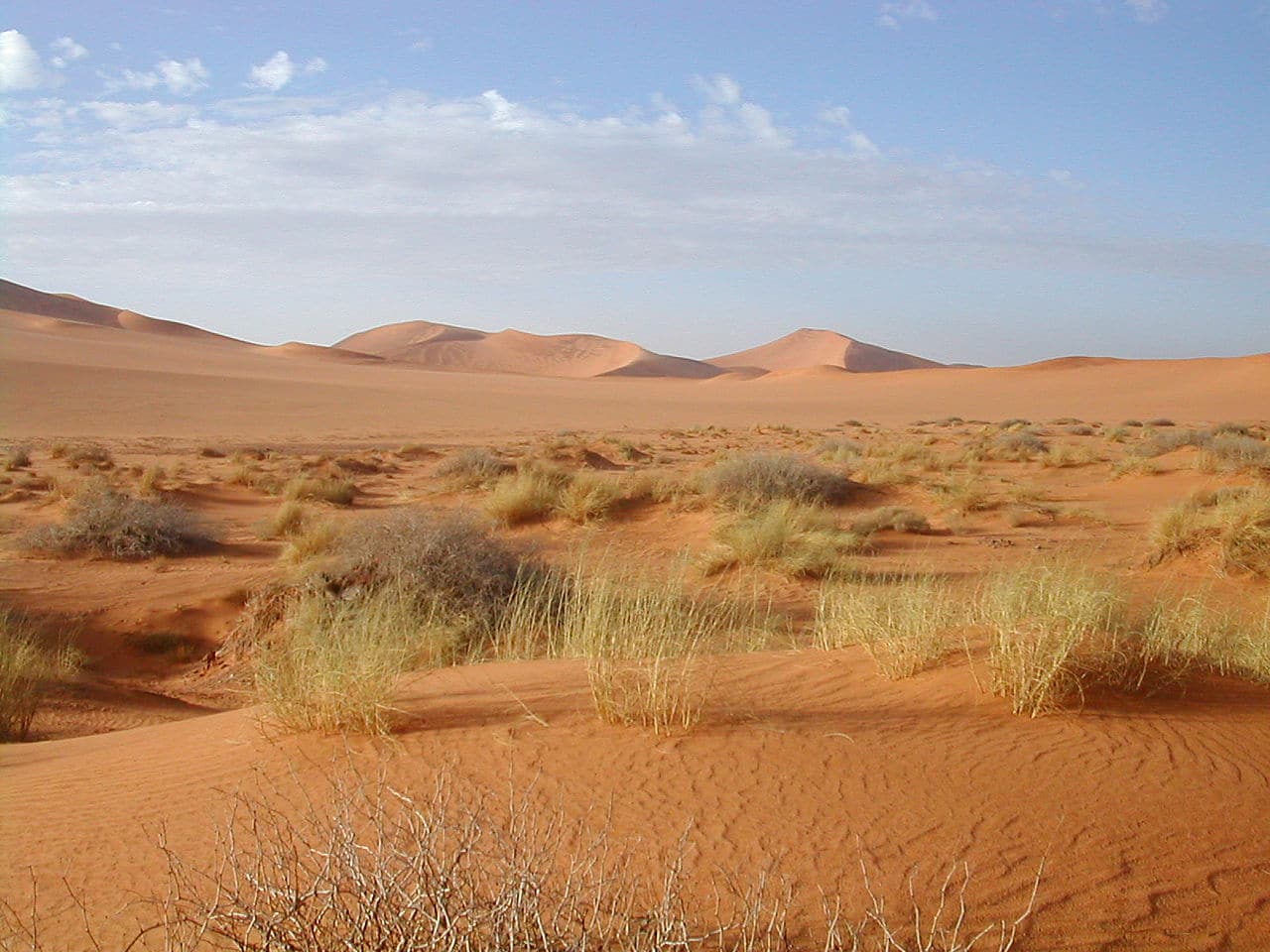
An area of the Sahara desert
How to get to the Sahara
We cannot recommend a single way to get to this colossal desert. The reason is that you can approach it from different countries. However, the normal thing is that you fly to a nearby city and then hire, as we said, some organized visit.
For example, if you want to visit the Moroccan Sahara, you can fly to cities like Marrakech and, once there, look for excursions. However, there are specialized agencies that already offer you the whole travel package before you get going.
In conclusion, the Sahara desert is the largest in the world among the warm. It covers several countries and offers you natural wonders, dream cities at the foot of oases and mysterious engravings in its stones that date back to the mists of time. Do you dare to know this colossus of our planet?